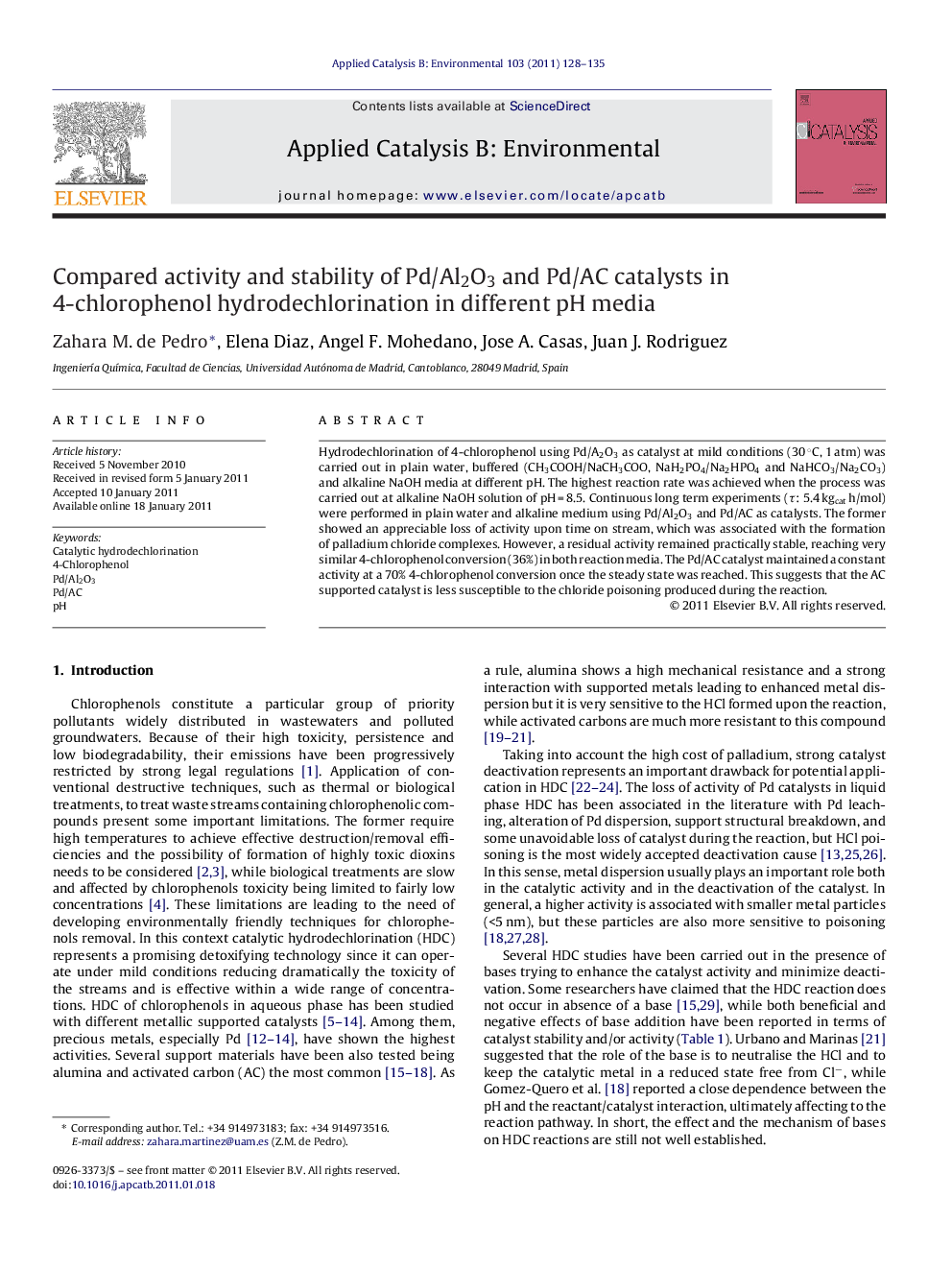| Article ID | Journal | Published Year | Pages | File Type |
|---|---|---|---|---|
| 47001 | Applied Catalysis B: Environmental | 2011 | 8 Pages |
Hydrodechlorination of 4-chlorophenol using Pd/A2O3 as catalyst at mild conditions (30 °C, 1 atm) was carried out in plain water, buffered (CH3COOH/NaCH3COO, NaH2PO4/Na2HPO4 and NaHCO3/Na2CO3) and alkaline NaOH media at different pH. The highest reaction rate was achieved when the process was carried out at alkaline NaOH solution of pH = 8.5. Continuous long term experiments (τ: 5.4 kgcat h/mol) were performed in plain water and alkaline medium using Pd/Al2O3 and Pd/AC as catalysts. The former showed an appreciable loss of activity upon time on stream, which was associated with the formation of palladium chloride complexes. However, a residual activity remained practically stable, reaching very similar 4-chlorophenol conversion (36%) in both reaction media. The Pd/AC catalyst maintained a constant activity at a 70% 4-chlorophenol conversion once the steady state was reached. This suggests that the AC supported catalyst is less susceptible to the chloride poisoning produced during the reaction.
Graphical abstractFigure optionsDownload full-size imageDownload as PowerPoint slideResearch highlights► The highest reaction rate with Pd/Al2O3 catalyst took place at pH ≈8.5. ► Pd/Al2O3 suffered a similar loss of activity in plain water and NaOH solution. ► Deactivation of Pd/Al2O3 was associated with the formation of Pd–Cl complexes. ► A higher activity and stability was exhibited by Pd/AC catalyst.
